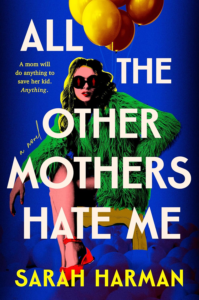The Curious Case of Self-Inflicted Suspense: Unraveling Kristen Perrin’s “How to Solve Your Own Murder”

Kristen Perrin’s debut novel, “How to Solve Your Own Murder,” presents readers with a deliciously intriguing premise: a woman receives a mysterious tape, seemingly from beyond the grave, foretelling her impending demise. This captivating hook immediately plunges us into a world of secrets, small-town intrigue, and the enduring power of the past. More than just a straightforward whodunit, Perrin crafts a narrative that blends classic mystery tropes with a fresh, contemporary voice, exploring themes of memory, perception, and the tangled web of relationships that bind a community together. Through a dual timeline and a compelling cast of characters, “How to Solve Your Own Murder” invites readers to become armchair detectives, piecing together fragmented clues alongside its protagonist and ultimately questioning not just who committed the crime, but why and how the truth becomes so elusive.
Dual Timelines Weaving Suspense
The novel cleverly unfolds across two distinct timelines, each enriching the other and building suspense. In the present day, Annie, haunted by a childhood trauma and adrift in her own life, inherits her aunt’s cottage in the seemingly idyllic village of Thorny Croft. While sorting through her aunt’s belongings, she stumbles upon a cassette tape – a chilling premonition recorded by her aunt just weeks before her unsolved murder thirty years prior. This discovery acts as a catalyst, propelling Annie into a personal investigation. The past timeline, woven seamlessly into the present narrative, transports us back to 1990, revealing the vibrant, close-knit community and the events leading up to Aunt Lila’s death. Through flashbacks and unearthed memories, Perrin masterfully paints a picture of a village teeming with hidden connections and simmering tensions, gradually revealing the potential motives and suspects lurking beneath the surface of everyday life.
Thorny Croft: A Character in Itself
Perrin excels at creating an atmospheric and richly detailed setting in Thorny Croft. The village itself becomes almost a character, steeped in history and populated with a colorful ensemble. From gossiping neighbors and long-standing rivalries to shared secrets and ingrained loyalties, the community dynamic is both charming and unsettling. This close-knit environment serves as both a haven and a cage, where everyone knows everyone else’s business, and where the secrets of the past have deep roots. This setting is crucial to the mystery, as the limited pool of suspects and the interwoven relationships amplify the suspense and make the reader feel intimately involved in the investigation.
Annie: An Everywoman Detective
At the heart of the novel is the protagonist, Annie. Initially hesitant and somewhat directionless, she transforms throughout her investigation, driven by a growing desire to uncover the truth about her aunt and, perhaps, find some clarity for her own life. Annie is relatable and flawed, grappling with her own past while navigating the complexities of the present mystery. Her perspective allows the reader to experience the unraveling of secrets firsthand, feeling her frustration, her determination, and her growing connection to a past she never truly knew. The supporting characters are equally well-developed, each harboring their own secrets and contributing to the intricate tapestry of the village. From old flames and resentful relatives to loyal friends and enigmatic strangers, Perrin populates Thorny Croft with individuals who are both suspicious and sympathetic, keeping the reader guessing about their true allegiances and involvement.
Exploring the Subjectivity of Truth and Memory
Beyond the compelling mystery plot, “How to Solve Your Own Murder” delves into deeper thematic territory. The novel explores the fallibility of memory and the subjective nature of truth. As Annie digs deeper, she realizes that recollections are often biased, fragmented, and influenced by personal perspectives. What seems like a clear memory from one person might be a distorted or incomplete picture from another. This exploration of memory adds layers of complexity to the investigation and forces the reader to question the reliability of the narratives they encounter. Furthermore, the book touches upon the enduring power of the past and its inescapable influence on the present. The secrets buried thirty years ago continue to cast long shadows, impacting the lives of the villagers and revealing how unresolved issues can fester and resurface in unexpected ways.
A Satisfying Blend of Mystery and Reflection
In conclusion, “How to Solve Your Own Murder” is a captivating debut that successfully blends classic mystery elements with a contemporary sensibility. Kristen Perrin crafts a suspenseful and atmospheric narrative, populated with intriguing characters and set within a richly realized village. More than just solving a cold case, the novel invites readers to ponder the complexities of memory, the tangled nature of relationships, and the enduring power of secrets. With its clever plot twists, well-developed characters, and evocative setting, “How to Solve Your Own Murder” proves to be a compelling and satisfying read for fans of mystery and suspense, leaving them pondering the lingering questions long after the final page is turned. It is a testament to Perrin’s skill in crafting a mystery that is not only about the “who,” but also about the “why” and the enduring human fascination with unraveling the secrets of the past.










